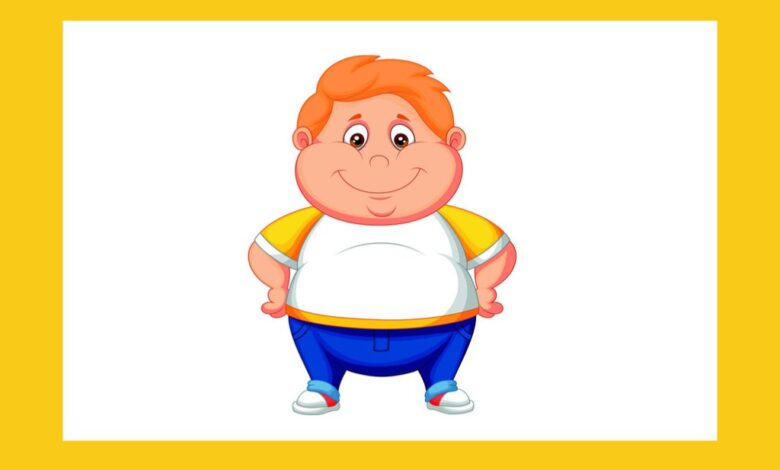How Fat Cartoon Characters Are Changing Body Image in Animation

Introduction
Fat Cartoon Characters have a significant impact on how children view the world. They shape our perceptions of body types, especially through the lens of fat cartoon characters. These characters can influence young minds, helping them form their ideas about body diversity. It’s essential to understand how these representations can affect children’s self-image and body acceptance.
This blog will explore how modern cartoons featuring fat cartoon characters are contributing to the body positivity movement. We will discuss their role in promoting healthier body image representation, breaking stereotypes, and fostering acceptance among children.
The Role of Media and Animation in Shaping Body Image
Influence of Media on Body Image
Media plays a crucial role in shaping how we view ourselves and others. From a young age, cartoons can heavily influence perceptions of body image. Fat cartoon characters have often been depicted in ways that affect children’s views on body diversity. When children see these characters, they learn what is considered “normal” in society.
Representation Matters: The portrayal of plus-size characters in animated media can create a lasting impression. Characters that are fat may be shown as comedic relief or villains, reinforcing negative stereotypes. This can lead to harmful perceptions, making it essential for media to offer balanced representations. Click Here
Cartoons as Early Teachers of Body Diversity
Cartoons are often children’s first teachers about body diversity. Through vibrant visuals and relatable stories, they introduce various body types, including fat cartoon characters. This exposure shapes children’s understanding of what bodies can look like.
Positive and Negative Exposure: Early encounters with different body types can influence how children feel about themselves and others. When children see characters who look like them, it helps normalize diversity. Conversely, negative portrayals can lead to shame and misunderstanding.
Evolution of Body Types and Representation in Cartoons
Early Depictions of Fat Cartoon Characters and Stereotypes
In the past, fat cartoon characters were often depicted as comedic figures or villains. Characters like Peter Griffin from Family Guy and Homer Simpson from The Simpsons serve as examples. They were designed to evoke laughter, but their roles also reinforced stereotypes about fatness.
Stereotypical Roles: These portrayals often suggested that being fat was associated with laziness, lack of intelligence, or unworthiness. Such messages can be harmful, teaching children that fat bodies are less valuable.
Modern Shift Towards Inclusivity and Body Positivity
Recently, there has been a noticeable shift in how fat cartoon characters are represented. Newer shows are breaking away from old stereotypes, showcasing a more inclusive range of body types.
Positive Representation: In Steven Universe and Peppa Pig, characters of varying sizes are portrayed positively, challenging the idea that fatness is inherently comedic or negative. These changes help foster a healthier conversation about body diversity.
How Fat Cartoon Characters are Promoting Body Positivity
Positive Representation of Fat Cartoon Characters
Today’s fat cartoon characters are increasingly portrayed in positive lights. They are no longer reduced to stereotypes or mere comedic roles. For instance, Fiona from Shrek and Po from Kung Fu Panda are strong examples of characters who embrace their bodies.
Empowerment through Representation: These characters teach children that body size does not define one’s worth or abilities. They encourage self-acceptance and confidence, challenging societal norms.
Breaking Stereotypes: Fat Cartoon Characters as Heroes and Role Models
Fat cartoon characters are increasingly represented as complex, heroic figures. They are not just sidekicks or comic relief. For example, Fat Albert and Po are depicted as relatable and inspiring, promoting values like confidence and self-acceptance.
Role Models: These characters show children that anyone, regardless of body type, can be a hero. They challenge the notion that only thin characters can be successful or admirable. Click Here
Cartoons Addressing Body Image Issues Directly
Many modern cartoons tackle body image issues head-on. They encourage children to embrace their bodies, regardless of size.
Storylines of Acceptance: Episodes from Steven Universe address self-worth, while Adventure Time explores themes of self-acceptance. These narratives help children navigate their feelings about their bodies and foster a healthier self-image.
Educational Value: How Cartoons Teach Kids to Embrace Body Diversity
Encouraging Acceptance of Different Body Types
Inclusive portrayals of fat cartoon characters teach children to accept body diversity. When children see fat characters portrayed positively, it helps break down negative stereotypes.
Empathy and Understanding: Understanding and accepting different body types can foster empathy. Children learn that all bodies deserve respect, helping create a more inclusive environment.
Positive Impacts on Children’s Self-Esteem
Research shows that seeing diverse body types in cartoons positively impacts children’s self-esteem. Shows like Big Hero 6 and Peppa Pig feature characters who embrace their appearance.
Boosting Confidence: When children relate to these characters, they are more likely to feel good about themselves. Positive representation can significantly enhance their self-image.
The Future of Fat Cartoon Characters and Body Representation
Animation Studios Leading the Charge in Body Inclusivity
Animation studios like Disney and Pixar are at the forefront of promoting body inclusivity. They are creating characters that reflect a broader range of body types.
Central Characters: More stories feature fat cartoon characters as central figures, moving away from traditional portrayals. This shift is paving the way for realistic body representations in animation.
Future Trends in Body Representation in Animation
As the demand for diverse representation grows, we can expect more inclusive portrayals of fat cartoon characters. These trends could normalize a wider range of body types and help combat societal pressures related to body image.
Normalizing Diversity: This evolution in animation is crucial for future generations. It encourages children to celebrate all body types and fosters an understanding of body positivity.
Conclusion
Fat cartoon characters play a vital role in shaping the body positivity movement. As representation evolves, so do the messages conveyed through animation. Today’s fat cartoon characters are breaking stereotypes and promoting acceptance, encouraging children to embrace diversity.
In conclusion, supporting inclusive media is essential. By doing so, we help foster a generation that values self-acceptance and celebrates all body types.
Call to Action
Reflect on how fat cartoon characters in modern animation have shaped your understanding of body image and self-acceptance. Share your thoughts with others and encourage discussions about body diversity in media.
FAQs
- What is body positivity in animation?
Body positivity in animation refers to the portrayal of fat cartoon characters in a positive light, promoting self-acceptance and confidence. - Why is body diversity important in kids’ cartoons?
Seeing a wide range of body types, including fat cartoon characters, teaches children acceptance and boosts their self-esteem. - Which cartoons promote a healthy body image?
Cartoons like Steven Universe, Shrek, and Big Hero 6 showcase diverse body types and promote body positivity. - How do cartoons shape children’s perceptions of body image?
Children form their ideas about body image by watching cartoons that feature characters with different body types, including fat cartoon characters.




